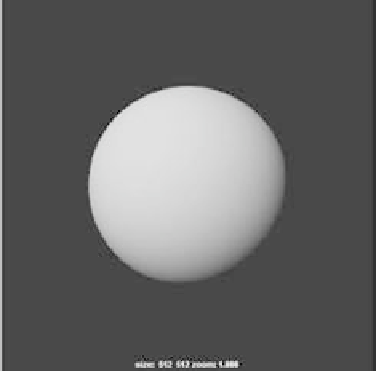Graphics Programs Reference
In-Depth Information
(Figure 7.1). The first section displays surface nodes, a.k.a. material nodes or shader
types. Of these shader types, five are common to other animation packages as well.
You'll use two of these later in this chapter.
To understand a bit more about shaders, consider what makes objects
appear as they do in the real world. The short answer is light. The way
light bounces off an object defines how you see that object. The surface
of the object may have pigments that affect the wavelength of light that
reflects off it, giving the surface color. Other features of that object's sur-
face also dictate how light is reflected.
For the most part, shader types address the differences in how light
bounces off surfaces. Most light, after it hits a surface,
diffuses
across an
area of that surface. It may also reflect a hot spot called a
specular
high-
light. The shaders in Maya differ in how they deal with specular and dif-
fuse parameters according to the specific math that drives them. As you
learn about the shader types, think of the things around you and what
shader type would best fit them. Some Maya shaders are specific to creat-
ing special effects, such as the Hair Tube shader and the Use Background
shader. It's important to learn the fundamentals first, so we'll cover the
shading types you'll be using right off the bat.
Figure 7.1
The Maya
shading nodes
Figure 7.2
A Lambert shader
The Lambert Shader Type
The most common shader type is
Lambert
,
an evenly diffused shading type found in
dull or matte surfaces. A sheet of paper, for
example, is a Lambert surface.
A Lambert surface diffuses and scatters
light evenly across its surface in all direc-
tions. (See Figure 7.2.)
The Phong Shader Type
Phong
shading, named after its developer,
Bui Tuong-Phong, who created it in 1975,
brings to a surface's rendering the notions
of specular highlight and reflectivity. A Phong surface reflects light with a sharp hot
spot, creating a specular highlight that drops off sharply. (See Figure 7.3.) You'll find that
glossy objects such as plastics, glass, and most metals take well to Phong shading.



















